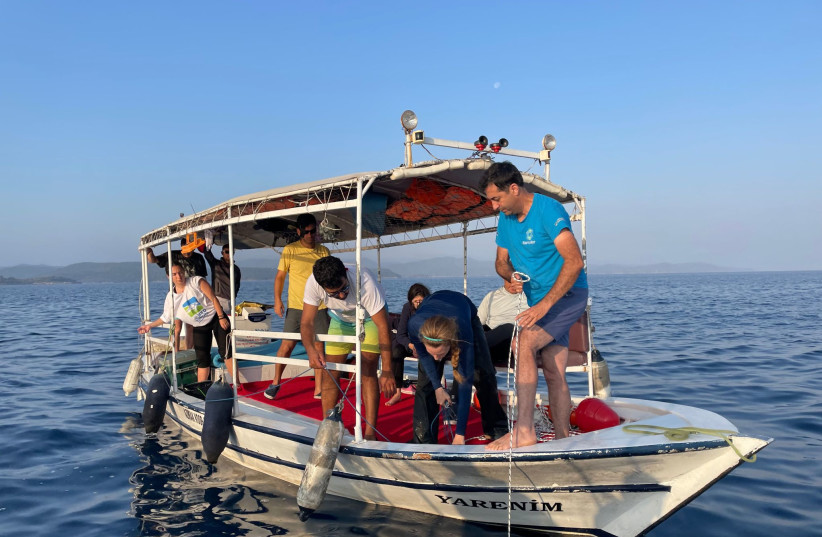A team of researchers at the University of Haifa has been awarded a $100,000 National Geographic Wayfinder Grant to track the movement of sharks along the eastern Mediterranean Sea (EMS) and determine why the sandbar and dusky shark species thrive there even as the sea changes due to climate change.
The study will be led by National Geographic Explorer Dr. Aviad Scheinin of the University of Haifa’s Morris Kahn Marine Research Station and head of its Marine Apex Predator Laboratory, and Dr. Leigh Livne, a postdoc at his lab.
On the one hand, the scientists will use a range of minimally invasive satellite tags, a network of fixed acoustic receivers, a suite of biological analyses, and the collection of environmental metadata to find where sharks are migrating and residing year-round in the EMS.
On the other hand, the research will focus on the conservation physiology of sharks in the EMS.
How do sandbark, dusky sharks thrive in the eastern Mediterranean?
The shark species aggregate in the water warmed from coastal power stations.

Scheinin has already tagged 103 sharks. He also leads the sea’s first “Shark Tagging School.” The university explained that most sharks have been tagged with acoustic transmitter tags. In addition, his team has deployed a network of 10-15 passive acoustic receivers in areas of known aggregations along the Israeli coastal shelf.
Now, through the grant and “National Geographic’s influential platform, we can scale up our story to reach the hearts and minds of scientists, children, and decision-makers alike,” Scheinin said. “This is a story about endangered species at the brink and our ability to discover the secrets about where they are most likely to survive under changing climatic conditions. It can also highlight humanity’s ability to protect and sustain these populations for future generations.”
Sandbar sharks are endangered, according to the International Union for Conservation of Nature Red List of Threatened Species. Dusky sharks are "data deficient" in the Mediterranean Sea, according to the IUCN red list.
78% of shark and ray species in the Red Sea classified as threatened
In general, one-third of sharks and rays are endangered, according to Assaf Levy, CEO and founder of BioDB.com. He told The Jerusalem Post that 78% of shark and ray species in the Red Sea are classified as threatened, including around 40 species on Israel’s coast. Moreover, in the Mediterranean Sea, it is estimated that 90% of the population was wiped out in the last few decades.
“Around 50 species occur off our Mediterranean coast, of which half are threatened,” Levy said.
Scheinin has built strategic collaborations with shark researchers across the EMS, including working with Turkish scientists, where he is piloting a training school on proper catch-and-release protocols for sharks with local colleagues. He also works with a consortium of researchers focusing on shark aggregations affiliated with universities in Turkey, the European Aquatic Animal Tracking Network, and the Mediterranean Conservation Society.
Israel is the only country that protects sharks and rays within its maritime borders, according to the University of Haifa. Since 2016, Scheinin has collected biological, morphometric, and passive acoustic data to estimate the health and distribution of species of sharks.
“This is significant because the EMS basin serves as a model for other marine regions as the effects of climate change become ever more apparent, giving researchers a unique opportunity to understand species’ requirements, as habitats in the EMS exist in a ‘post-warming’ state,” the university said.
For her research, Livne will use a range of hormone and blood biochemical markers and ultrasonography to determine the sharks’ fertility and maternal condition.
“In the ’70s and ’80s, when the movie Jaws came out, the idea of sharks as predators dominated the conversation,” Livne said. “Now, the public is learning more about what scientists have been saying for decades: sharks are very important to our ecosystem.
"They're a stabilizing force and are critical to maintaining the ecological balance in marine life."
